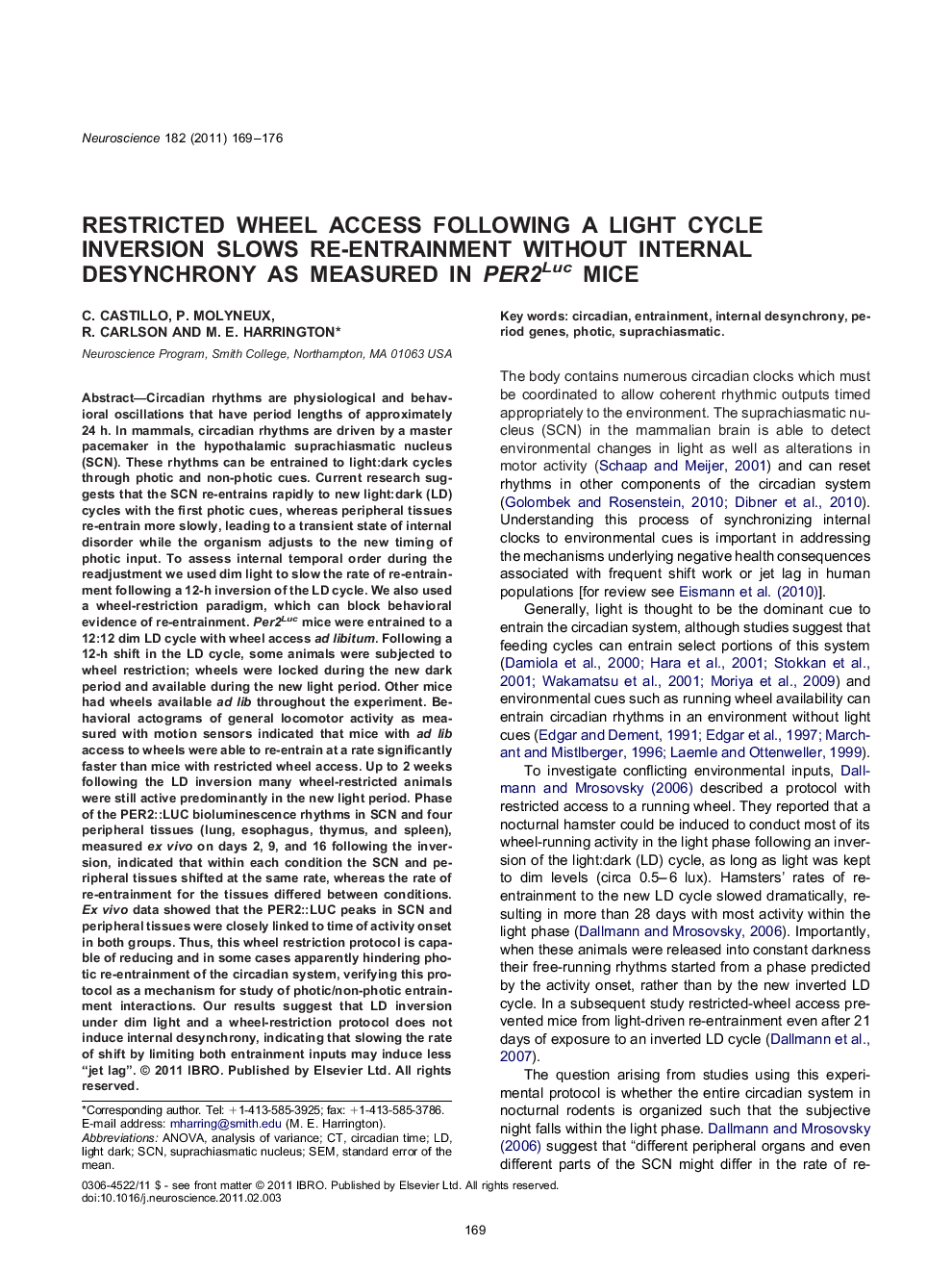| کد مقاله | کد نشریه | سال انتشار | مقاله انگلیسی | نسخه تمام متن |
|---|---|---|---|---|
| 4338969 | 1614894 | 2011 | 8 صفحه PDF | دانلود رایگان |

Circadian rhythms are physiological and behavioral oscillations that have period lengths of approximately 24 h. In mammals, circadian rhythms are driven by a master pacemaker in the hypothalamic suprachiasmatic nucleus (SCN). These rhythms can be entrained to light:dark cycles through photic and non-photic cues. Current research suggests that the SCN re-entrains rapidly to new light:dark (LD) cycles with the first photic cues, whereas peripheral tissues re-entrain more slowly, leading to a transient state of internal disorder while the organism adjusts to the new timing of photic input. To assess internal temporal order during the readjustment we used dim light to slow the rate of re-entrainment following a 12-h inversion of the LD cycle. We also used a wheel-restriction paradigm, which can block behavioral evidence of re-entrainment. Per2Luc mice were entrained to a 12:12 dim LD cycle with wheel access ad libitum. Following a 12-h shift in the LD cycle, some animals were subjected to wheel restriction; wheels were locked during the new dark period and available during the new light period. Other mice had wheels available ad lib throughout the experiment. Behavioral actograms of general locomotor activity as measured with motion sensors indicated that mice with ad lib access to wheels were able to re-entrain at a rate significantly faster than mice with restricted wheel access. Up to 2 weeks following the LD inversion many wheel-restricted animals were still active predominantly in the new light period. Phase of the PER2::LUC bioluminescence rhythms in SCN and four peripheral tissues (lung, esophagus, thymus, and spleen), measured ex vivo on days 2, 9, and 16 following the inversion, indicated that within each condition the SCN and peripheral tissues shifted at the same rate, whereas the rate of re-entrainment for the tissues differed between conditions. Ex vivo data showed that the PER2::LUC peaks in SCN and peripheral tissues were closely linked to time of activity onset in both groups. Thus, this wheel restriction protocol is capable of reducing and in some cases apparently hindering photic re-entrainment of the circadian system, verifying this protocol as a mechanism for study of photic/non-photic entrainment interactions. Our results suggest that LD inversion under dim light and a wheel-restriction protocol does not induce internal desynchrony, indicating that slowing the rate of shift by limiting both entrainment inputs may induce less “jet lag”.
▶Restricted wheel access slowed circadian entrainment. ▶SCN and peripheral tissues shifted at the same rate within each condition. ▶PER2:LUC peak in SCN and peripheral organs was closely linked to time of activity onset regardless of wheel restriction. ▶Wheel restriction combined with LD inversion does not induce internal circadian desynchrony.
Journal: Neuroscience - Volume 182, 19 May 2011, Pages 169–176